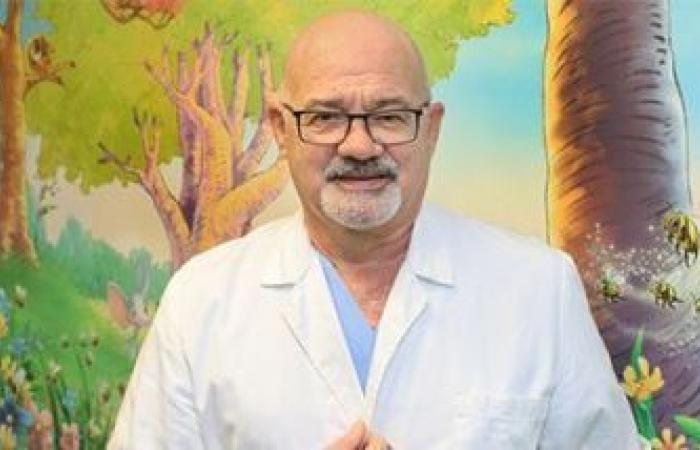Priest (AEIOP): “We are committed to spreading uniform treatment protocols, but the 15-year age group remains uncovered”
The treatment of pediatric tumors in Italy has reached new goals also thanks to the network of Italian Association of Pediatric Hematology Oncology (AEIOP) and its 49 specialized centers. We talked about it with its president, Archangel Priest.
“AIEOP is a scientific society founded in 1978 with the aim of guaranteeing all Italian children and adolescents the best possible treatments for oncological and haematological diseases, as close to home as possible. This – explains Prete to Osservatorio Malattie Rare – has led to the creation of a network of 49 centers distributed throughout the national territory, with the exception of Val d’Aosta, Molise and Basilicata which however have agreements with centers in neighboring regions. Among the main activities of AIEOP is. And the drafting and dissemination of uniform diagnosis and treatment protocols for the various pathologies, so as to guarantee the same treatment possibilities in all centers, from Aosta to Catania.”
“Obviously, the larger centers such as the Bambino Gesù in Rome or the Policlinico di Milano, having more resources, are also able to carry out research and experiments. The protocols provide for the uniform management of the patient and the standardized application of therapies, from Catania in Turin. Over time we have identified specific groups of patients, such as infant (under one year of age), with ad hoc protocols. However, the 15-17 year age group still remains uncovered.”
Are there differences in treatment between children and adolescents?
“Absolutely yes. We have learned over time that tumors that arise in the first year of life (the “infants”) have different biological characteristics and must be treated with specific protocols. The problem is that most pediatric protocols extend up to 14-year-olds. 15 years, while those for adults start from 18. There is therefore a “grey area” between the ages of 15 and 17 in which it is not clear how to treat patients. The Italian Society of Pediatrics is working to extend the pediatric age up to 18 years, so as to also include adolescents in pediatric protocols. Extending the pediatric age would require legislative change, but there is resistance because it would involve overhauling the entire healthcare system.”
Why is this age group problematic?
“It’s a historical and regulatory problem. By law, the pediatric age ends at 14 years. From 15 you move on to the general practitioner. We would like to extend the pediatric age up to 17 years and 364 days, to ensure better grip also psychological care of adolescents. To date, it is assessed on a case-by-case basis whether a 17-year-old is more suitable for a pediatric or adult wardthe. Currently, the choice whether to admit a seventeen-year-old to a pediatric or adult ward is made on a case-by-case basis, evaluating the preferences of the person concerned as well as medical considerations. There is no single rule. In all AIEOP centers there are psychologists who support this delicate passage.”
What if he is 15 years old? For example, how is a 15-year-old boy with a haematological tumor managed?
“We have developed a strong collaboration with adult colleagues. For example, in acute lymphoblastic leukemia, a 15-year-old can be treated in both pediatric and adult oncology, deciding on a case-by-case basis based on the patient’s specific situation.”
To find out more, read the special:
PEDIATRIC CANCERS IN ITALY: WHAT THEY ARE AND WHERE TO TREAT THEM
How does your network work in practice?
“We have created IT systems for the centralization and sharing of patient data. Furthermore, we have a network of 17 reference laboratories, each specialized in a specific pathology, to which the various AIEOP centers send biological samples for analysis. This allows to have rapid and accurate answers everywhere. Unfortunately, however, the resources available to the various centers are not uniform, with disparities between north and south. The aim is to have highly specialized centers that are well distributed and can offer all diagnostic options and therapeutics, so as to minimize healthcare migration.”
Can the recent establishment of the National Rare Cancer Network help in this sense?
“Definitely. Regions like Piedmont, which already have a good hub&spoke system, have an outgoing healthcare migration close to zero. If we can guarantee the same treatment possibilities close to home also for patients in the south, with the support of telemedicine for follow-ups, we will be able to significantly reduce “journeys of hope” and waiting lists. However, not all regions have fully implemented the directives on the Rare Cancer Network, it will take time to implement it.” LINK TO THE CANCER NETWORK PIECE
Another delicate topic is that of pediatric palliative care. Where are we at?
“This network depends a lot on the individual regions, with the usual north-south disparities. In general, however, thanks also to dedicated ministerial funding, most regions have a pediatric palliative care network. In many centers, the palliative care doctor is involved right from the moment of diagnosis. There is still a lot of cultural resistance on the topic, especially when associated with children. Because in many cases palliative care is mistakenly associated with the terminal phase, but it can also be useful for patients with a good prospect of survival. “
What other messages do you want to send in conclusion?
“The first is that in pediatric oncology you cannot always be cured, but you can always take care of yourself. Palliative care is not just for terminally ill people. The second is that taking charge of the child must also be extended as much as possible to the adolescent, with specific paths. The third is that online collaboration and telemedicine, if well implemented, can guarantee high standards of care everywhere, saving resources. On all these fronts, as AIEOP, we will continue to do our utmost.”
In summary, the AIEOP network in over 40 years of activity has made great progress in guaranteeing the best possible care for all children and young people with cancer, regardless of where they live. There remain critical issues linked to the lack of homogeneity of resources in the area and the care of adolescents, on which we still need to work. The development of parallel and interconnected networks such as that of rare tumors and palliative care will certainly be able to make an important contribution in the coming years.
To find out more, read also_
Links to the other pieces






